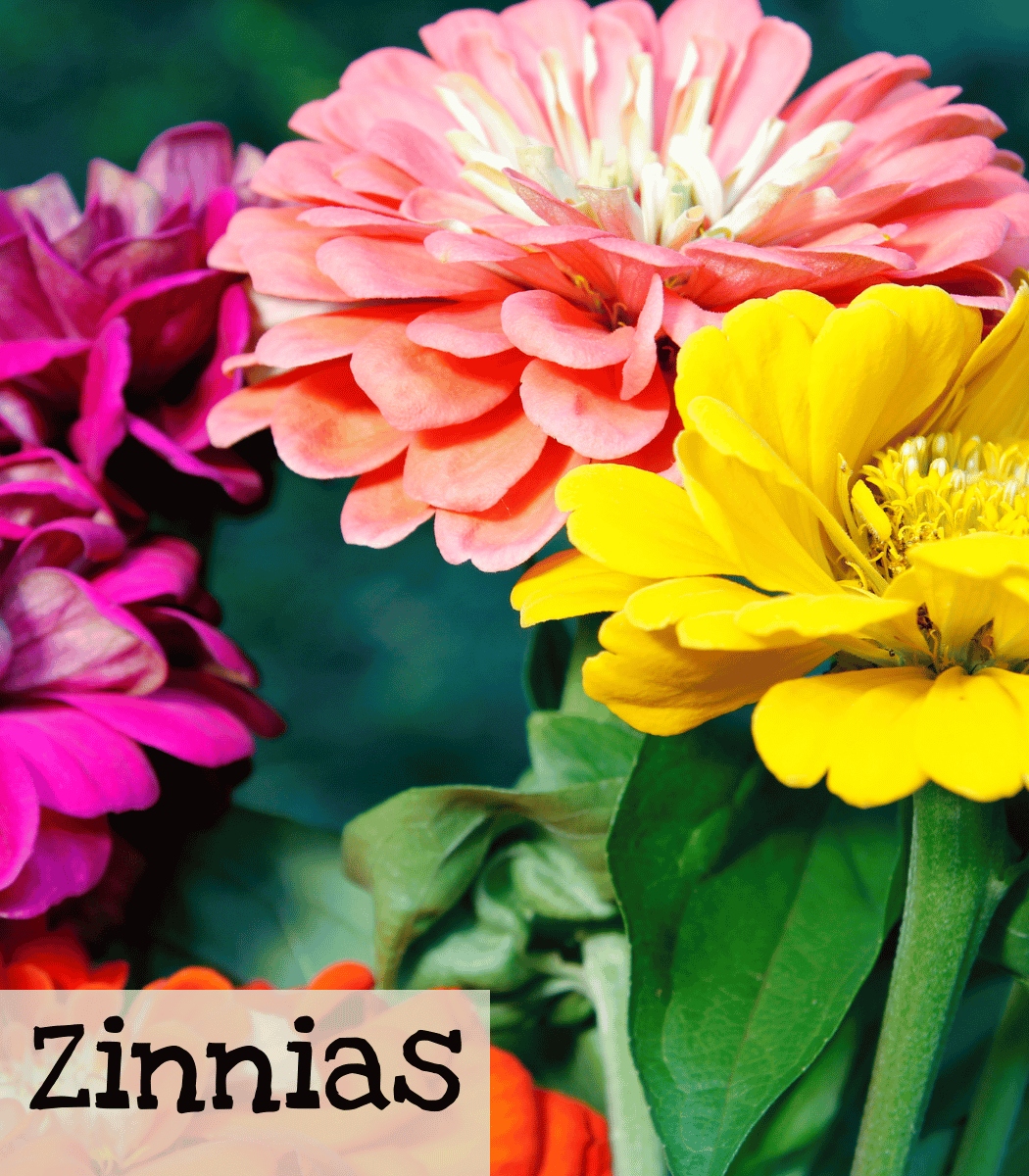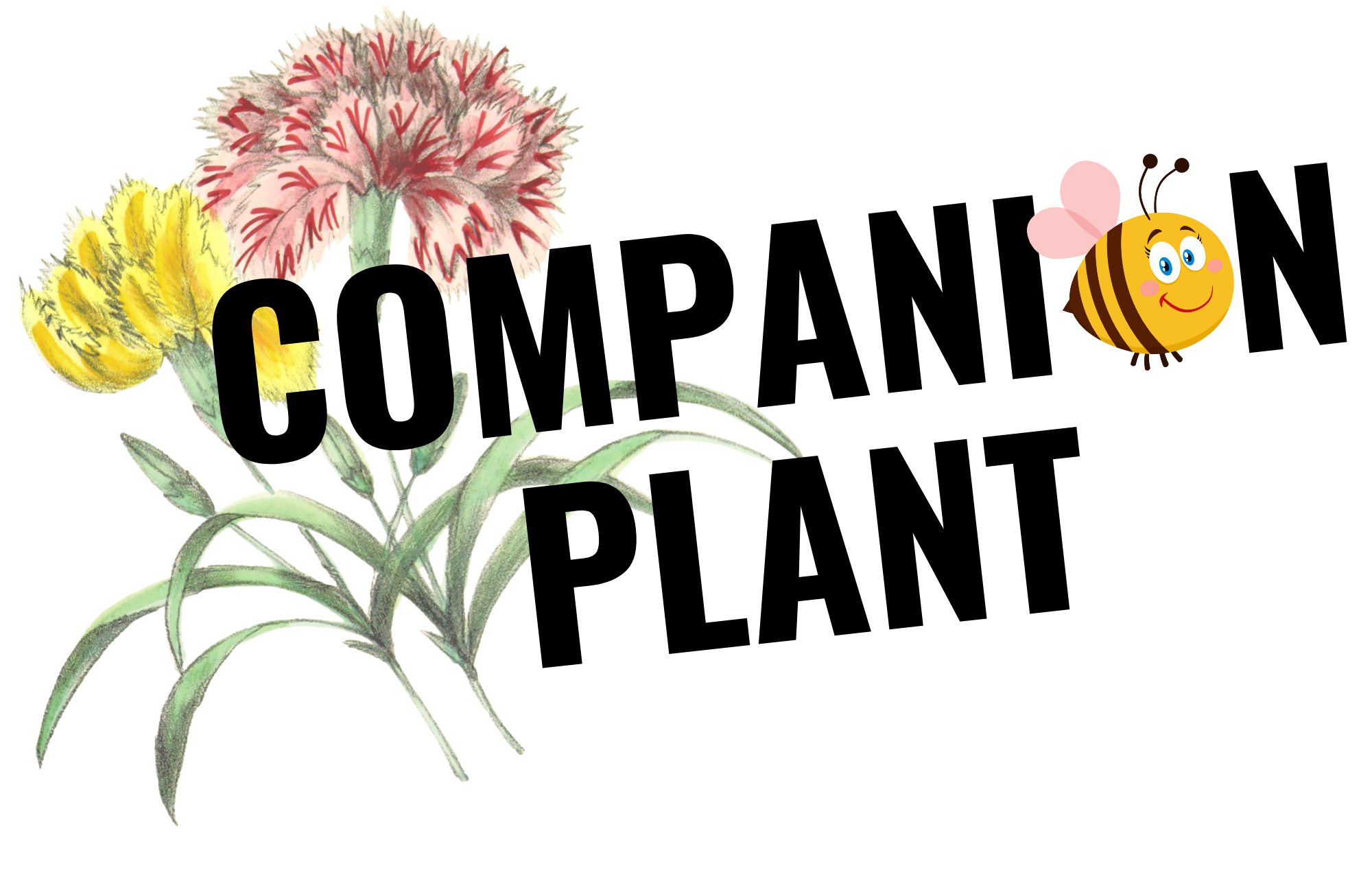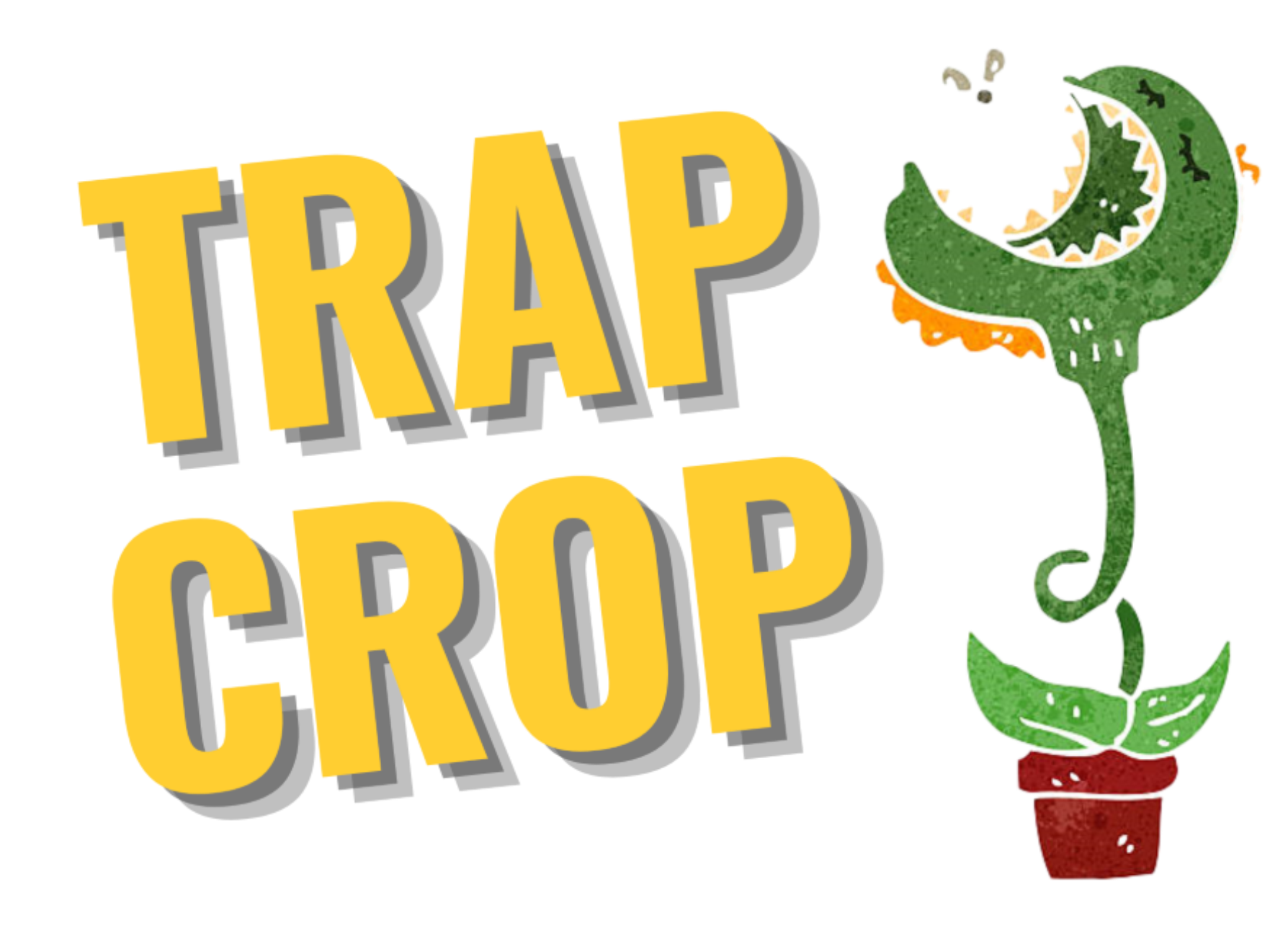
Zinnia
Zinnias are heat-loving flowers that thrive in long summers! They come in varying heights from very short to a few feet tall. Not only are zinnias good nectar flowers, but they also make excellent companion plants and trap crops.
|
Burpee’s Big Tetra; Bureeana Giants Mix; California Giant Mix; Envy; Exquisite; Giant Flowered; Peppermint Stick; Persian Carpet; Pinwheel; Queeny Lemon Peach; State Fair Mix; Zinderella Peach |
|
Zinnia elegans |
| Can be used as a trap crop | |
|
Easy |
|
Intermediate |
|
3-5 years if properly stored |
|
Annual |
|
7-10 days |
|
None |
|
1/4 – 1/2 inch |
|
|
|
Full sun |
|
Summer to Fall |
|
March, April, and May |
|
Yes |

Growing Tips




3 plants per 20” container

When to Start
Spring: Start indoors 6-8 weeks before the last frost. (Mid-Feb – Mid-Mar for Jefferson, GA)
Direct sow: After outdoor temps are above 50 F and all danger of frost has passed. (May 1 for Jefferson, GA)
Start Indoors for Trap Cropping. You need to start soon enough so that the plant is blooming at the time the pests you are trying to contain arrive.
How to Start
For later transplants, start zinnias indoors 6-8 weeks before the last frost. Sow 1/4 to 1/2 inch deep into seed cells and place under grow lights. They are large enough for transplant when they are 2.5 – 3 inches tall. Once they have grown enough, harden the seedlings off. Then transplant them into full sun beds. Or you can direct sow once the danger of frost has passed and outside daytime temperatures are 50 F or higher.
Care
Powdery mildew and other diseases can attack zinnia flowers that are planted too close together or that remain wet from overhead watering. Space the seeds 4-6 inches apart for smaller varieties and 12 inches apart for taller varieties. This allows for adequate air circulation around the plants as they grow. By watering at the base of the plant with soaker hoses, the leaves will stay dry which will also help prevent these fungal problems.
They are heat-loving plants and do very well in areas with long hot summers. Zinnia plants benefit from deadheading and flower removal until you are ready for them to go to seed.
Planting with a purpose
Zinnias are aesthetically pleasing. They attract numerous butterflies and other pollinators. They make both a good trap crop and a companion plant.
Companion Planting
When using zinnias as a companion plant, intermix them with vegetables. Zinnias attract the hoverfly, which will eat aphids. They also attract parasitic wasps, which will eat tomato hornworms (and many other pests) as well as, numerous other predators. For more information watch “Companion Planting” (Link below).
Trap Cropping
When used as a trap crop, these flowers can protect other crops that Japanese beetles will destroy. They may not look as pretty after the beetles get done with them, but that just means they are doing their job! For more information follow the steps in “Trap Cropping” (Link below).
My personal experience
Zinnias are some of my favorite flowers. They are beautiful cut flowers and add lovely fall color when many other plants are starting to die back. Zinnia’s come in many colors and some intresting flower shapes.
They attract pollinators and beneficial predators. I’d plant them even if they weren’t a companion plant and trap crop! They are one of the top flowers used as a trap crop to keep Japanese beetles from devouring other plants. Ever since I’d started planting them, the Japanese beetle damage in my blackberries and okra is minor.
I plant zinnias with my okra, squash and anywhere else I can tuck them into the garden. I might have to prune them more in the vegetable garden verse the flower garden to keep them more compact.
Here you can see the zinnias are blooming before the okra is fruiting and before the Japanese beetles are a problem. This way when the beetles start coming they will already have the zinnias to snack on instead of my okra.

Seed Saving

Isolation Distance
Insect dependent for pollination. Isolate 1/2 mile to prevent cross-pollination.
Instructions
Select healthy, robust plants free of any signs of disease or insect infestation for seeds. Seeds carry the traits of the parent plant. Choose plants that exhibit the traits you wish to preserve. Consider bloom size, color, and shape, as well as blooming time.
Allow the biggest and healthiest blooms to mature on the plant. Cover the seed head with a fine-mesh bag as soon as the flower petals shrivel and die. Use an elastic band to hold the bag in place. This prevents seeds from spilling onto the soil before harvest.
Clip the flower head from the main stem once the seeds are dry and dark. Separate plant debris from the seeds by removing the mesh bag. Then place the flower head in a paper bag and shake to loosen the seeds. The seeds should settle to the bottom of the bag. Remove any plant debris by hand.
Features
- Edible flowers
- Companion plant
- Trap crop
- Attracts pollinators and hummingbirds
- Good cut flowers
- Deer resistant
- Easy maintenance
- Container friendly
- Burpee’s Big Tetra: Heirloom. Blooms come in a colorful spectrum of 6″ dahlia-flowered blossoms, in bold oranges, yellows, reds, and whites. Glorious as cut flowers. A magnet for pollinators. Heat-loving.
- Bureeana Giants Mix: The 2′ plants are soon massed with 6″ blooms in a wide range of bold colors.
- California Giant: Heirloom. Developed in 1926. Plants produce stems as tall as 4 feet with huge 5″ blooms, making this variety ideal for cut flowers! The shape of the flower is a bit more open than the Dahlia Flowered variety, with petals rounded on the end.
- Envy: This green zinnia has 3″ double and semi-double blooms.
- Exquisite: Heirloom. Four to five-inch red blooms that change to a rosy red and then softer pink.
- Giant Flowered: Huge, 5″ doubles, on sturdy, bushy plants.
- Pinwheel Mix: It is mildew-resistant and compact.
- Peppermint Stick: Heirloom. The blooms are streaked, striped, and speckled. They are either cream or yellow with red. Some blooms will be solid colors.
- Persian Carpet: Heirloom. The dwarf plant produces blooms that are red, gold, chocolate, orange, and cream, with some bicolored.
- Pinwheel: These are mildew-resistant plants. The blooms are daisy-like.
- Queeny Lemon Peach: Heirloom. Lemony-hued blooms with dark peach centers reach 2-4 inches across. Great for cut flowers.
- State Fair Mix: Heirloom. The blooms come in many colors on tall, robust stems. They are perfect for cutting or enjoying in a container or garden bed.
- Zinderella Peach: Heirloom. Flowers come in striking shades; surprising, hard-to-come-by patterns. Blooms are fully-double, semi-double, and single 2-2½ inch crested blooms with creamy centers and soulful dark eyes.

The petals are edible but slightly bitter and best used as a decoration on cakes or as a garnish on salads.
If you’re having trouble with Japanese beetles, plant zinnias near the problem area.
Zinnias are a good companion plant that will attract predators to help with pests.
For more details on using zinnias for pest control see Pest Management.
You May Also Like:
Companion plant Marigold
4 Must-Have Flowers For Your Garden
Companion Planting: How to use flowers to help control pests.
Trap cropping: How to keep pests out of your main crop.
Sources:
Edible Flowers: How, Why, and When We Eat Flowers by Monica Nelson
Starting & Saving Seeds by Julie Thompson-Adolf
